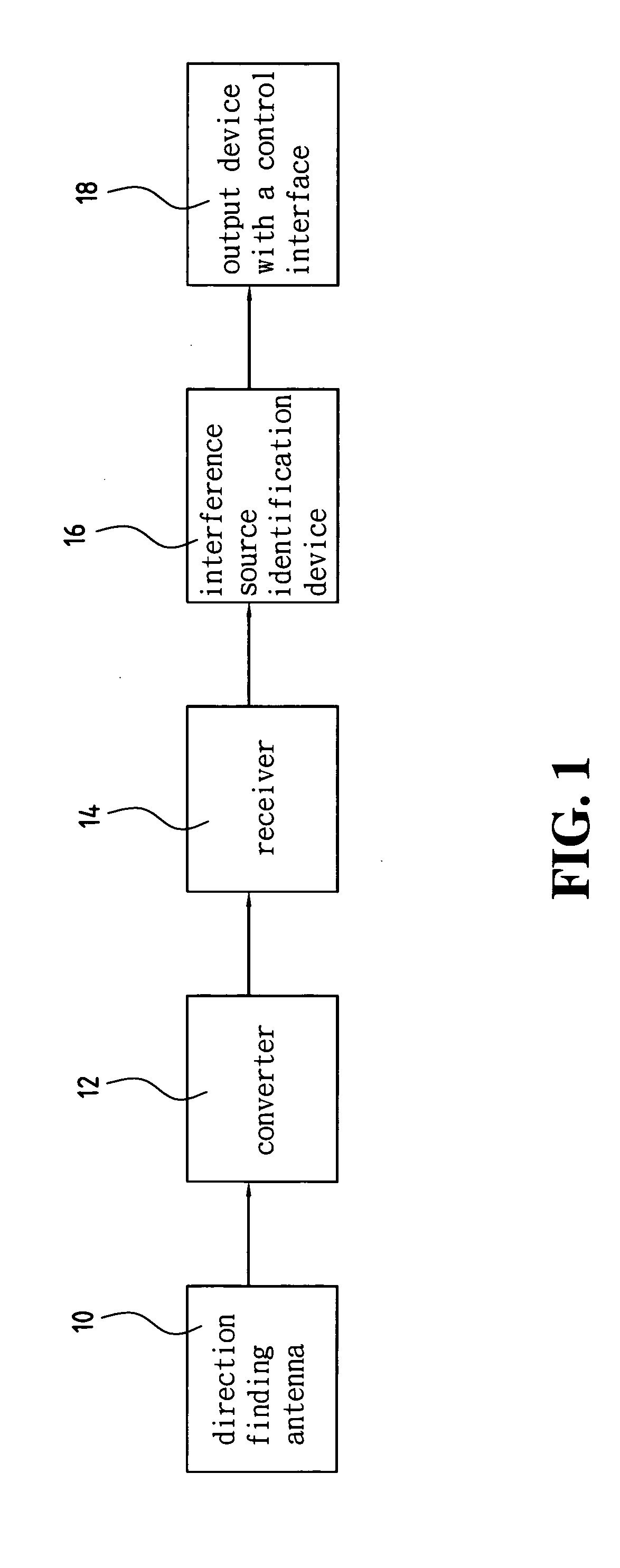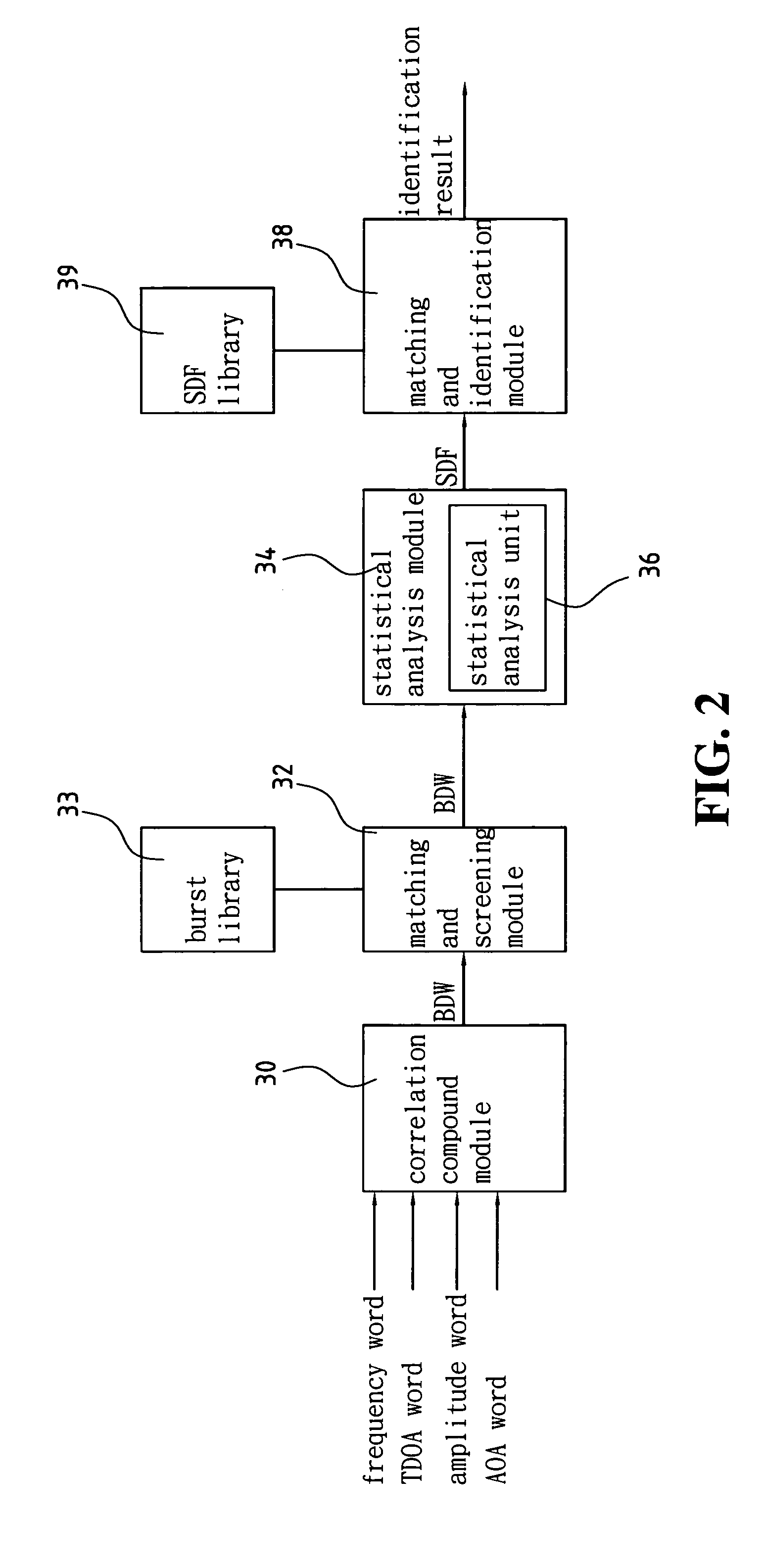Device and method for identifying interference source in wireless communications
a wireless communication and interference source technology, applied in the field of wireless communication interference source identification, can solve the problems of interference source, inability to demodulate, degrade the communication quality of conventional techniques, etc., and achieve the effect of improving the transmission performance of wireless communication equipmen
- Summary
- Abstract
- Description
- Claims
- Application Information
AI Technical Summary
Benefits of technology
Problems solved by technology
Method used
Image
Examples
Embodiment Construction
[0016]FIG. 1 shows a diagram of the present invention. As shown in FIG. 1, the interference source identification system comprises a direction finding antenna 10, a converter 12, a receiver 14, an interference source identification device 16, and an output device 18 with a control interface. Interference source identification device 16 is the core component of the present invention for identifying the interference source. The following first describes the components and the role they play in the present invention. The details of the interference source identification device 16 will be described later.
[0017] Direction finding antenna 10 is used for receiving and processing radio frequency (RF) to provide the back stage and extract the directional information of the interference source. Converter 12 is for converting the RF signals into intermediate frequency (IF) signals. Receiver 14 measures and calculates the frequency, time difference of arrival (TDOA), amplitude, and angle of ar...
PUM
 Login to View More
Login to View More Abstract
Description
Claims
Application Information
 Login to View More
Login to View More - R&D
- Intellectual Property
- Life Sciences
- Materials
- Tech Scout
- Unparalleled Data Quality
- Higher Quality Content
- 60% Fewer Hallucinations
Browse by: Latest US Patents, China's latest patents, Technical Efficacy Thesaurus, Application Domain, Technology Topic, Popular Technical Reports.
© 2025 PatSnap. All rights reserved.Legal|Privacy policy|Modern Slavery Act Transparency Statement|Sitemap|About US| Contact US: help@patsnap.com



